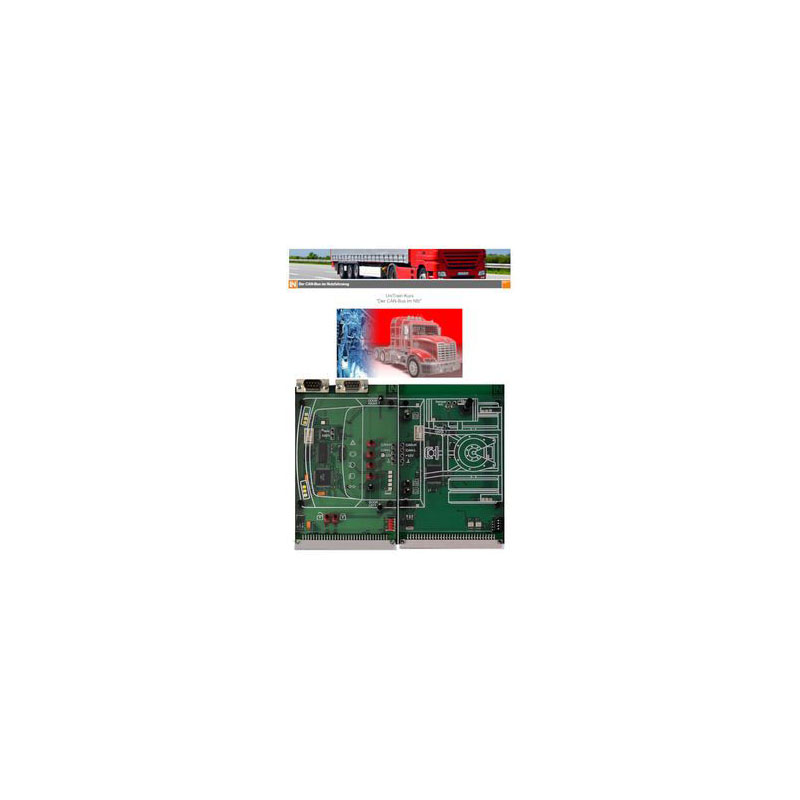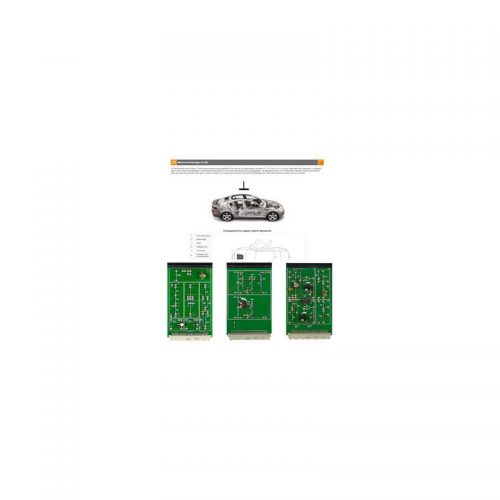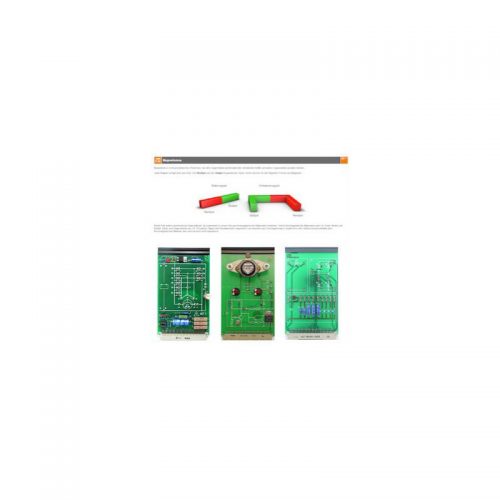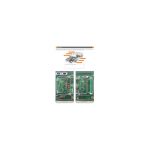Only logged in customers who have purchased this product may leave a review.
UniTrain Course – CAN bus in commercial vehicles
$0.00
ABOUT THIS PRODUCT:
In commercial vehicles, communication between the various control units as well as sensors and actuators play a decisive role. With more extensive automotive electronification this requirement will grow, and new fields of application will open. In this context, the safety-relevant and multimedia sectors deserve special mention.
To meet the requirement, many different bus systems have been developed. Over time, however, one bus system has made a special name for itself – the Controller Area Network – Bus, or CAN-Bus for short. Exactly this bus system is the content of this course. On the following pages you will get a detailed and comprehensive insight into the theory and practice of this bus.
Includes:
- 2 Experiment cards (front and rear of truck) with emulation of a complete CAN bus system for utility vehicles including actuators, sensors, and dashboard
- Two microcontroller systems with communication via the CAN bus
- Cascading via CAN-IN and CAN-OUT on Sub-D9 connectors
- CAN node I with indicators, lights, simulated key, fuel tank indicator, temperature sensors, and more
- CAN node II with rear light, fuel tank simulation, electric window, central locking functions, and more
- Labsoft browser and course software
Course contents:
- List of reasons for increasing use of bus systems in utility vehicles
- Identifying various bus systems in utility vehicles
- Introduction to the topology and components of a CAN bus in a utility vehicle
- Introduction to the difference between low-speed and high-speed CAN buses
- Experimental determination of electrical properties of a CAN bus
- Experimental determination of (low-speed and high-speed CAN buses)
- Introduction to the principles of addressing and arbitration on a CAN bus
- Determining identifiers by measurement
- Introduction to the structure of a message frame for a CAN message
- Analysis of CAN packets using the CAN monitor and an oscilloscope
- Interpretation of CAN packets using the CAN monitor and an oscilloscope
- Editing and transmitting CAN message via PC
- Investigating the effect of termination on a low-speed and high-speed CAN bus by measurement
- Fault simulation (8 simulated faults activated by relay)
- Course duration 7 h approx. (fault finding 1.5 h approx.)








Reviews
There are no reviews yet.